
Master 3D modeling for film and video games in under 2 years with CG Spectrum. Get personalized career training online from leading 3D artists from major studios, plus career support and access to a vibrant community. Learn more.
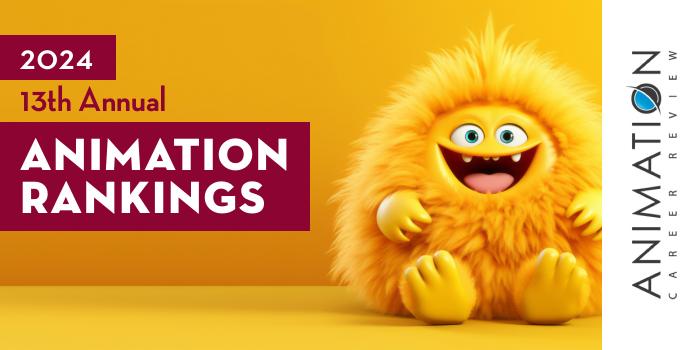
| Ranking | School | Country |
|---|---|---|
| 1 | Nanyang Technological University | Singapore |
| 2 | Beijing Film Academy | China |
| 3 | Tokyo Animation College | Japan |
| 4 | National Institute of Design | India |
| 5 | Bezalel Academy of Arts and Design | Israel |
| 6 | ChungKang College of Cultural Industries | South Korea |
| 7 | City University of Hong Kong | Hong Kong |
| 8 | Limkokwing University of Creative Technology | Malaysia |
| 9 | Jilin Animation Institute | China |
| 10 | Kyoto University of the Arts | Japan |
For this ranking we only consider formal degree programs (bachelor's degree or equivalent). For an explanation of our ranking criteria, click here.

Nanyang Technological University, Singapore (NTU Singapore or NTU) is home to the College of Humanities, Arts, and Social Sciences (CoHASS). Within the college is the School of Art, Design and Media (ADM), which provides interdisciplinary programs taught in a collaborative environment. Other ADM features include access to more than 50 labs, media studios, and editing suites; participation in fieldwork and a 10-week internship; a fully stocked library with over 19,000 titles; and study abroad opportunities in more than 60 countries.
The ADM at NTU Singapore also houses a Media Art BFA program that combines animation, filmmaking, games, and photography. Students may specialize in Digital Animation, Digital Filmmaking, or Photography & Digital Imaging. The program also allows students to enhance the degree through a minor within CoHASS or any other NTU school. Minor examples include Art History; Communication Studies; Design and Systems Thinking; and Creative Writing.
Course examples for the NTU Media Art BFA include Issues in Animation Practice; Writing for Animation; 3D Character Animation; Digital Compositing; Graphic Storytelling; Visual Effects (VFX) I-II; Cinematic Concepts and Motion Capture Applications; Game Design; 3D Production; Rigging for Animation; Lighting and Rendering Pipeline; Film Editing; Storyboarding & Production Design; and Advanced Stop Motion.
The Media Art BFA program at Nanyang Technological University, Singapore culminates with the nine-unit Final Year Project (FYP). Graduates are prepared to pursue careers in animation, VFX, game art and design, film, and advertising. Some Media Art graduates go on to pursue an advanced degree such as NTU’s Art, Design and Media MA (ADM MA). The school also has an ADM PhD program.
Students in both programs benefit from frequent ADM workshops, screening, and exhibitions; a designated graduate research lounge; and graduate communities, such TGIF (Thoughtful Gathering and Insightful Friday) and The Graduate Club. MA and PhD students also have access to animation and editing suites; motion-capture, virtual reality (VR), and sound mixing studios; 3D printing, print, and digital sound labs; movie theatres; and a dark room,
The graduate ADM programs allow students to customize the curriculum to their academic and career goals. In addition, the School of Art, Design and Media has six formal graduate research areas. Options include Design Studies; Visual Art and Digital Humanities; Art, Design and Media Histories and Criticism; Audiovisual Art; Cultural Identity and Heritage, and Southeast Asian Art, Design, and Media. The MA also has a Digital Humanities Research Cluster.
The Audiovisual Art area is ideal for Animators. The area explores character animation, experimental filmmaking, VR film, real-time 3D storytelling, sound art, motion graphics, stop-motion, data visualizations, art installation, and sound art.
Graduates of the ADM MA and PhD programs at Nanyang Technological University, Singapore are prepared for faculty positions, research careers, and advanced roles in all areas of animation, games, film and television, sound design, advertising, and visualization, among others.
Nanyang Technological University, Singapore traces its roots back to 1981, when Nanyang Technological Institute was established as a teaching university on the grounds of Nanyang University. Nanyang, Singapore was officially established in 1991. Today, this research-intensive school serves 35,000 students, making it the second largest public university in Singapore. Nanyang Technological University, Singapore provides hundreds of programs at all degree levels across four colleges and 14 schools.

Beijing Film Academy (BFA) is China’s only film academy and the largest film school in Asia. In 2000, BFA launched the Animation School—formerly the Animation major in the Department of Fine Arts—and the first ever school of animation in the field of higher education in China. BFA Animation School leadership consists of 21 teachers and staff, including one professor, three associates, five lecturers, and eight associate lecturers. Beijing Film Academy also hosts famous animators and cartoonists from China and around the world.
With nearly 360 students enrolled in BA, MFA, PhD, and non-degree programs, the Animation School focuses on the following disciplines: Computer Animation, Comics, Game Design, Art of Animation, Film, and Art Design. The MFA has formal Game Design, Stop-Motion Film, Anime Planning, and Animation Product Design research areas. For the PhD program, students can focus in Research on Animation Theory.
Students in all Beijing Film Academy programs benefit from opportunities to collaborate on projects with Massachusetts Institute of Technology (MIT), Gobelins, Straight Entertainment (Hollywood, CA), and Taylor’s University; interdisciplinary studies; the opportunity to participate in the student film festival known as Cinerent Award; participation in exchange workshops with the Korean Academy of Film Art (KAFA) and the Netherland Film Academy (NFA); and long-term cooperative relationships with major studios in China and abroad.
Graduates of the Animation Programs at Beijing Film Academy are prepared to pursue roles in areas such as animation, computer games design, cartooning, television, visual effects (VFX), multimedia design, web design, research, and art education. Program alumni are Animators, Directors, Educators, Researchers, Designers, Filmmakers, and VFX Artists.
Graduates have worked on productions that have won awards at the Cannes Film Festival, Venice Film Festival, Berlin International Film Festival, Shanghai International Film Festival, and the Tokyo International Film Festival.
Beijing Film Academy was established in 1950 as the Performance Art Institution of the Film Bureau of the Ministry of Culture. When it opened, the school had just 38 students. Today, BFA serves approximately 4,000 students across 15 departments and schools. The school provides undergraduate, graduate, PhD, and short-term training programs. Around 72% of BFA students are enrolled in four majors including Film Directing, Performing Arts, Cinematography, and Chinese Language. Beijing Film Academy is recognized by the Beijing Municipal Commission of Education.

Tokyo Animation College has several paths to study animation. Options include Anime Production (three years), Animator/Animation (two years), and Character Design (two years). Students in all programs have access to state-of-the-art labs and studios such the animation and comic labs; drawing, computer, and training rooms; animation, manga, illustration, and acting practice rooms; vocal, recording, and post-recording studios; archive rooms; and free spaces.
The three-year Anime Production program explores TV animation, 3D animation art, theatre animation production, 3DCG, and web animation. Course examples for the program include Anime Production I-II; Character Design; Directing Techniques; Advanced Flash Anime; Color Design; Filming/Editing; Advanced 3DCG; Background Arts; Advanced Sketching I-IV; Short Animation Production; and Business.
Anime Production students will also complete Graduation Production I-III, culminating with a full-length animated production.
The two-year Animator/Animation program begins with basic skills such as drawing, sketching, and motion. Students will move on to mastering animation production processes such as color/filming editorial techniques, and background art. Students in this program will take most of the same courses as students in the Anime Production program. The program culminates with a final project (Animation Production).
Housed in the Comic Department, Character Design is a two-year program that includes courses such as Basic Sketching I-IV; Production Development; Character Design I-II; Advanced Flash Anime; Comic Expression Techniques I-III; 3D Design; Advanced Sketching I-II; Practical 3DCG; and Color Techniques. Students in this program will also complete several projects, a graduation production, and a final presentation.
Graduates of the animation programs at Tokyo Animation College are prepared to pursue roles such as Animator (Film), Flash Animator, Technical Director, Producer, CG Director, Key-Animator, Character Designer, Animator (Television), Production Assistant, Film Director, Digital Cell-Painter, Animation Supervisor, Storyboard Artist, Inbetweener, Comic Book Artist, Art Director, Cartoonist, Production Controller, and Animator (Advertising).
Tokyo Animation College dates to 1979 when the Music School was founded. In 1984, the school became a specialized training institution authorized by the Tokyo Metropolitan Government. In addition to state-of-the-art production facilities, Tokyo Animation College now houses dorms, libraries, reference centers, and a career center.
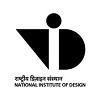
National Institute of Design (NID) has two paths to study animation: the BDes and MDes in Animation Film Design. All students benefit from the NID Animation Film Design Lab, which features state-of-the-art classrooms and studios. This production hub allows students, faculty members, and industry professionals brainstorm and bring their creations to life. The Lab is equipped with technology and production tools such as HP Workstations, Wacom Cintiq, sound systems, Toon Boom Pencil Check Pro, Dragonframe, and TVPaint Animation.
Other NID resources include the Exhibition Design Studio and Lab; Toy and Game Design Studio; Clay Studio; Printing Studio and Lab; Film and Video Communication Design Labs; Physical Computing Lab; Audiovisual (AV) Lab; IT Center; Photography Lab; Design Vision Center; and the Skills Development Lab. All resources are provided across NID’s three campuses.
Part of the NID Faculty of Communication Design, the BDes and MDes programs also feature small class sizes of no more than 19 students; case studies and other interactive sessions; experiential learning opportunities such as field trips and internships; immersive workshops; membership in the NID Film Club; access to learning opportunities at more than 55 overseas partner institutions; and project-based courses.
BDes and MDes students also have opportunities to present their works at the Student International Animation Festival Chitrakatha. This biennial event attracts professional Animators from independent and major studios from India and around the world.
In 2017, National Institute of Design launched a Design PhD that allows students to complete research and creative works in areas such as Film and Digital Media. Students in the Design PhD program have access to the same opportunities and resources as students in the BDes and MDes programs.
The BDes program may be completed in four years at the Ahmedabad campus. Available at all NID campuses, the MDes takes 2.5 years to complete. The NID Design PhD can be completed in four to six years at the Ahmedabad campus.
Graduates of the BDes, MDes, and PhD programs at National Institute of Design are prepared to pursue roles at animation studios, production houses, digital gaming studios, UI/UX and e-learning companies, television networks, advertising firms, and more. Program alumni are Animators, Filmmakers, Character Designers, Storyboard Artists, Producers, Creative Directors, and Consultants at places such as Cartoon Network, MTV, Nickelodeon, Cognizant, Infosys, and Tata Interactive.
NID alumni have also gone on to launch their own studios, freelance businesses, and careers as educators at NID and other universities around the world.
Established in 1961 as the National Institute of Industrial Design, National Institute of Design is a statutory institute under the Department for Promotion of Industry and Internal Trade (DPIIT), Ministry of Commerce and Industry, Government of India. The school serves approximately 1,200 students enrolled 20 programs at the bachelor’s master’s and PhD levels. Focus areas include Industrial Design; Communication Design; Textile, Apparel & Lifestyle Design; IT Integrated (Experiential) Design; and Interdisciplinary Design Studies.
Consisting of three campuses in Ahmedabad, Gandhinagar and Bengaluru, National Institute of Design has been declared an ‘Institution of National Importance’ by the Act of Parliament, by virtue of the National Institute of Design Act 2014. The school is also recognized by the Department of Scientific and Industrial Research-Government of India as a Scientific and Industrial Research Organization.

Bezalel Academy of Arts and Design (Bezalel) is Israel’s oldest art and design institution. The school recently moved to a brand new 10.5-acre campus in the heart of Jerusalem. Designed by the Japanese architectural firm SANAA the campus houses workshops, classrooms, gallery space, and an auditorium for nearly every discipline.
Bezalel Academy of Arts and Design also houses the Department of Screen-Based Arts, which features access to state-of-the art facilities and equipment; immersive workshops; guest lecturers; portfolio development courses; internship opportunities; and study abroad experiences. The Department also provides a Screen-Based Arts BFA that focuses on Animation and Experimental Cinematography.
Course examples for the program 3D Animation- Body Mechanics; 3D Character Animation; Animation Software; Art Direction for Stop Motion; Character Design and Storyboard; Compositing; Directing and Animation for Digital Platforms; Art Direction for Classic Animation; Experimental Animation; Maya: 3D Modeling; Sound Design: Animation; Stop Motion; Storytelling in 3D; Toon Boom; 3D Animation Directing; and Video Art.
The Screen-Based Arts BFA culminates with a final animation project. Graduates are prepared for careers in animation production, game art and design, and film and television. Some program alumni have launched their own studios, while others have started their own freelance businesses. Graduates have also won more than a dozen awards for work on a number of major productions.
Bezalel Academy of Arts and Design was officially established in 1906 as the Bezalel School of Arts and Crafts. Today, the school employs more than 500 faculty members that serve approximately 2,500 students enrolled in options across 10 bachelor’s departments and five master’s programs. Bezalel Academy of Arts and Design also has collaborative agreements across 215 academic institutions worldwide.
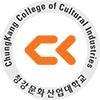
ChungKang College of Cultural Industries (ChungKang) houses the School of Animation, which has a three-year program that serves 180 students. Upon completion of the program, students can advance to the one-year BA program, which accommodates 50 artists. The entire program is multidisciplinary, workshop intensive, and studio- and project-based. Students will study animation, game design, cartooning, directing, post-production, and planning.
Course examples for the program include 12 Basic Principles of Animation; Experimental Animation; 3D Rigging; Matchmove Compositing; Visual Development; 3D Animation and Character Production; CFX Simulation; 2D Animation Production Workshop; 3D Human Modeling; Storyboard; and Digital Animation Techniques.
Other program features include courses taught by industry professionals; access to state-of-the-facilities, including the largest animation studio in Korea; a sound recording studio and a render farm; a tutoring program; opportunities to gain experience through mandatory local and international internships; independent study opportunities; and portfolio development.
In the final year of the program, students will develop their thesis project and presentation leading to the Animation BA. Graduates are prepared to pursue roles in animation, games, film, television, and advertising, among others.
ChungKang College of Cultural Industries opened in 1996 as South Korea’s first post-secondary institution with a primary focus on the cultural industries. Today, ChungKang provides programs ranging from Animation to Early Childhood Education. Programs are housed across the Schools of Manhwa Contents, Game, Culinary Arts, Animation, Fashion & Beauty Style, Convergence, Performing Arts, and Mobile IT, and the Department of Early Childhood Education.

City University of Hong Kong (CityU) houses the School of Creative Media (SCM). Within the SCM is a Creative Media (CM) program with options leading to a BA, BSc, MA, MFA or PhD in Creative Media; a New Media BAS; and a joint degree with Leuphana University (LU) (CityU BACM or BAS + LU Digital Media BA). A Creative Media minor is also available.
All students have access to the SCM’s state-of-the-art animation studios and labs. Designed for 2D/3D animation and design, the labs are equipped with graphics workstations and the latest 2D/3D animation software, including Houdini, Maya, Zbrush, and Nuke. Other SCM features include work and learning that takes place in a studio environment; professional internships; participation in a semester-long exchange program with one of more than 160 partner institutions; and the opportunity to complete a summer study abroad program in animation. The program lasts one month.
Students in all CityU SCM programs can study animation, games, new media, or cinema through required courses, elective clusters, and free electives. Examples of available Animation courses include Character Animation; Procedural Animation; Computer Animation for Interactive Content; Computer Programming for Animators; Abstract and Experimental Animation; World Building in Digital Narrative Media; 3D Content Production in Maya; Digital Composition; Web Animation; and Creative Media Studio.
The CM programs at City University of Hong Kong culminate with a graduation project or graduation project/thesis. Graduates are prepared to pursue positions in areas such as animation (film and television), game art and design, cartooning, advertising animation, media art, screenwriting, storyboard art, multimedia design, video production, exhibit design, art education, and animation (health and science).
Established in 1984, City University of Hong Kong is a public research university the serves more than 20,000 students, including 9,000+ post graduates. The school provides access to hundreds of programs across 10 colleges and schools, and 29 academic departments. City U also established the Hong Kong Institute for Advanced Study (HKIAS), 10 Applied Strategic Development Centers, and 23 Research Institutes/Centers.
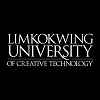
Limkokwing University of Creative Technology (Limkokwing University) has several paths to study animation: the Animation & Multimedia Design diploma, an associate degree in Animation, and an Animation BA. All programs are delivered through the Faculty of Creative Multimedia.
The diploma program explores emerging, advanced, and experimental digital animation. Course examples include Animation Methodology; Computer Graphics; Communication Studies; Animation Production Design; Analytical Drawing; Design Studies; and History of Animation. Students in this program will also complete a final project across two courses.
Graduates of the Animation & Multimedia Design program at Limkokwing University are prepared for careers such as Assistant Animator, 2D Animator, Digital Ink Artist, Character Designer, Visual Development Artist, 2D Concept Artist, Background & Layout Designer, and Storyboard Artist.
The Animation associate’s degree program at Limkokwing University explores the fundamentals of animation. Students in this program will also learn about storytelling, animation history, and special effects (SFX). Upon completion of this program students are prepared for entry-level positions in the entertainment industry or for admission to the Animation BA.
In addition to storytelling, animation history, and SFX, the Animation BA also explores scriptwriting, industry software, classical animation, and the entire animation production pipeline. Animation BA students will also complete hands-on projects and coursework in a professional studio-like environment, while gaining real-world experience through the internship program.
Course examples for the program include Animation Practice 1-4; 3D Modeling; Multimedia Imaging; 3D Environment & FX; 3D Animation; Video Production; and Animation Project Management. Animation BA students will also take the Professional Studies and Entrepreneurship courses.
The Animation BA Program at Limkokwing University culminates with an animation dissertation and final project completed across two courses.
Graduates of the Animation BA program at Limkokwing University of Creative Technology graduates are prepared to pursue advanced roles in across the animation, games, television, feature film, and advertising industries. Potential job titles include Animator, 3D Animator, Character Animator, 3D Modeler, Texture Artist, Game Artist, Art Director, Digital Matte Artist, and Animation Supervisor.
Limkokwing University of Creative Technology was established in 1991 under the name Limkokwing Institute of Creative Technology. The school, which serves more than 30,000 students from over 150 countries, has 13 campuses in Asia, Africa, and Europe. Limkokwing University of Creative Technology provides hundreds of accredited diploma, degree, and postgraduate programs across seven faculties, Limkokwing Sound & Music Design Academy, and the Limkokwing Post-Graduate Center (PBC).

Jilin Animation Institute (JAI) is home to the School of Animation Art (SAA). Established in 2000, the school is one of the first on China to provide an undergraduate animation program. Serving more than 2.600 students, the SAA hosts than 200 international visiting professors, including Director of Kung Fu Panda, Mark Osborne. Students also benefit from SAA-based research and experimental platforms such as Jilin International Joint Research Center for Digital Animation Technology; Jilin Virtual Simulation Animation Technology Laboratory; and the Jilin 3D Interactive Technology Laboratory.
Other SAA benefits include participation in international exhibitions and competitions; research, technology development, and projects with close to 100 international universities in 30 countries; immersive workshops; and state-of-the-art classrooms, studios, and production facilities.
The School of Animation Art at Jilin Animation Institute also provides three BA programs: 2D Animation, 3D Animation, and New Media Animation. Across programs, students may take courses such as 3D Design; Programming; History of Animation; Character Design; Principles of Timing; Color and Media; Web Design; Animation Project Management; Web Design; Layout, and Post-Production.
All JAI SAA animation students will have the opportunity to complete several Animated films and an internship.
The Animation BA programs at Jilin Animation Institute can be completed in four years, full-time. Graduates are prepared for graduate study and careers in animation, games, television and film, advertising, and more. Graduates have gone on to pursue graduate study at top institutions such as Savannah College of Art and Design (SCAD), Rubika France, and University of the Arts London.
Program alumni have also been hired at Tencent, Light Chaser Animation, CCTV, NetEase, Perfect World Entertainment, ALPHA, and miHOYO.
Jilin Animation Institute was established in June 2000. This independent, private, undergraduate college serves 12,000 students enrolled in 36 majors across 14 schools/academies including Animation Arts; Manga; Games; Design and Product; Film; Film Technology; Virtual Reality; Cultural Industry Business; Animation Industry; Civil Aviation; Innovation and Entrepreneurship; Marxism; General Education; and International Exchange. Jilin Animation Institute is approved by the Ministry of Education.
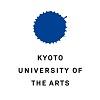
Kyoto University of the Arts (KUAD) houses the Faculty of the Arts, which provides programs in areas such as animation, manga, film, contemporary art, and graphic design. Students can learn animation through the Character Design BA program in the Department of Character Design; the Illustration BA program through the Department of Information Design; or through the Film Production BA program in the Department of Film Production.
Across all programs, students benefit from courses taught by industry professionals; access to state-of-the-art production facilities and labs; internship opportunities; workshops, seminars, and visiting artists; and study abroad experiences. Students also have the opportunity to enhance any degree program by completing courses from other areas such as manga, mixed media, visual communication design, spatial design, art studies and cultural production, X-tech design, directing, photography, or painting.
Graduates of the BA programs at Kyoto University of the Arts are prepared to pursue careers across the animation, film and television, game design, fine art, advertising, education, and other industries.
Kyoto University of the Arts is a private university that began as a junior college in 1977. The school became a four-year university in 1991. Today, KUAD serves approximately 4,120 students and another 14,060 online through the schools distance education division. Kyoto University of the Arts houses two campuses, facilities such as the Koyodo Museum of Art, and dozens of programs at all degree levels.